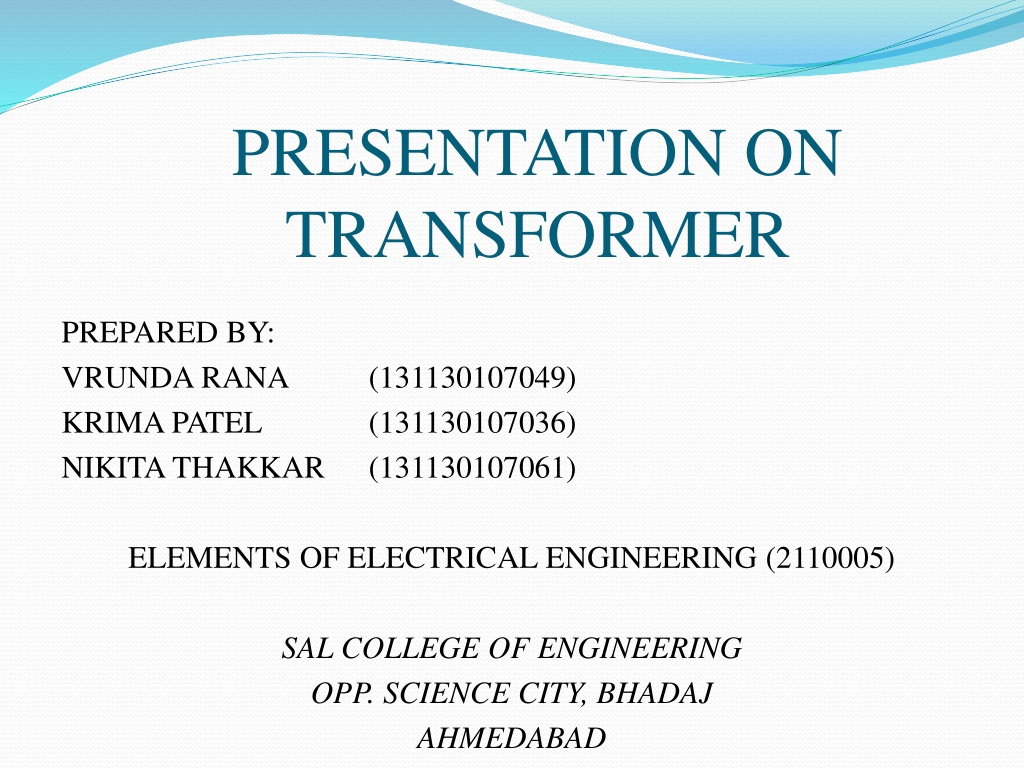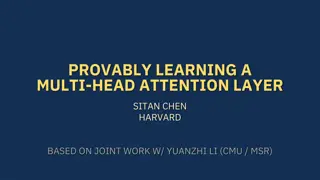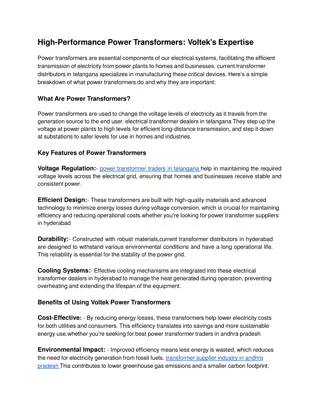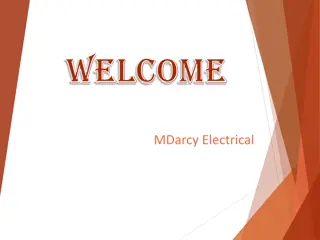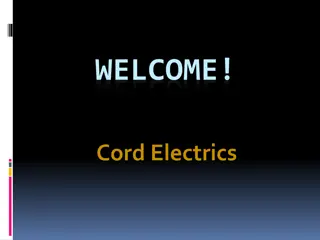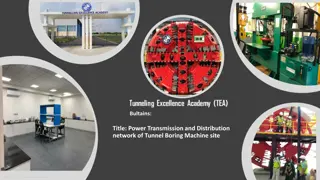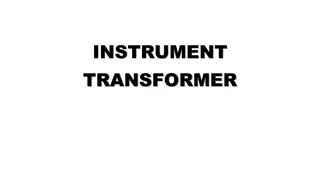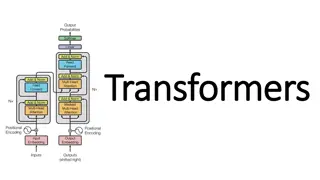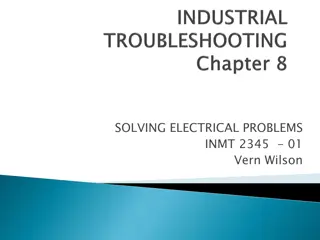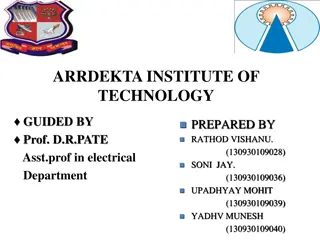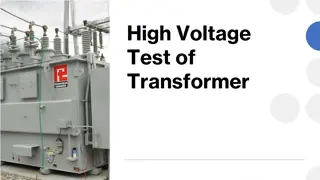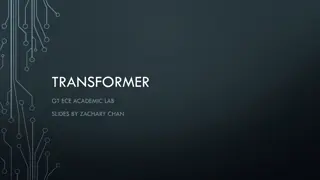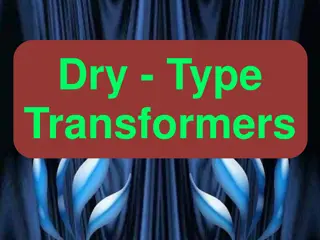Understanding Transformers in Electrical Engineering
The transformer is a crucial static device used to transfer electrical energy between AC circuits by altering voltage levels. This presentation explores the basic principles of a transformer, its operation, and why it cannot function with direct current. Colorful visuals further enhance the comprehension of this essential electrical engineering component.
Download Presentation

Please find below an Image/Link to download the presentation.
The content on the website is provided AS IS for your information and personal use only. It may not be sold, licensed, or shared on other websites without obtaining consent from the author. Download presentation by click this link. If you encounter any issues during the download, it is possible that the publisher has removed the file from their server.
E N D
Presentation Transcript
PRESENTATION ON TRANSFORMER PREPARED BY: VRUNDA RANA KRIMA PATEL NIKITA THAKKAR (131130107049) (131130107036) (131130107061) ELEMENTS OF ELECTRICAL ENGINEERING (2110005) SAL COLLEGE OF ENGINEERING OPP. SCIENCE CITY, BHADAJ AHMEDABAD
INTRODUCTION The transformer is a static device which is used to transferelectrical energy from one ac circuit to another ac circuit. Input to a transformer and output from a transformer both are alternating quantities (AC). Electrical energy is generated and transmitted at an extremely high voltages. The voltage is to be then reduced to a lower value for its domestic and industrial use. This is done by using a transformer.
The power transmission system using transformers is shown in figure. When the transformer changes the voltage level, it changes the current level also.
Basic Principle The primary winding is connected to the single phase ac supply, an ac current starts flowing through it.
The ac primary current produces an alternating flux ( ) in the core. Most of this changing flux gets linked with the secondarywinding through the core. The varying flux will induce voltage into the secondary winding according to electromagnetic induction. Voltage level change but frequency i.e. time period remains same. There is no electrical contact between the two winding, an electrical energy gets transferred from primary to the secondary. the faraday s laws of
A simple transformer consists of two electrical conductors called the primary winding and the secondarywinding. Energy is coupled between the windings by the time varying magnetic flux that passes through( links) both primary and secondarywindings.
Can the transformer operate on DC? Answer: NO The transformer action does not take place with a directcurrentof constant magnitude. Because with a DC primary current, the flux produced in the core is notalternating but it is of constantvalue. As there is no change in the flux linkage with the secondary winding, the induced emf in the secondary is zero.
If DC is applied to the primary then there is a possibilityof transformercore saturation. If core saturates the primary will draw excessively large current. Therefore application of DC should be avoided.
Transformer Types The transformer are of different types depending on the arrangement of the core and the winding as follows. Core Type Shell Type Berry Type The magnetic core is a stack of thin silicon-steel laminations about 0.35 transformer. In order to reduce the eddy current losses, these laminations are insulated from one another by thin layersof varnish. mm thick for 50 Hz
Sr. No 1. Core Type Transformer Shell Type Transformer The core has only one window. Winding encircles core. Cylindrical windings are used. Easy to repair. The core has two windows. 2. the Core encircles the windings. 3. Sandwich type windings are used. It is not so easy to repair. 4. 5. Better more surface is exposed to the atmosphere. cooling since Cooling is not very effective.
Construction of Transformer The Most important parts of a transformer are the windings (coils) and the core. Some other parts such as suitable tank, conservator, bushings, breather, explosion vent etc. are also used along with thecore and windings.
Applications Step upand Step down Voltage Measurement of current in single and three phase system Measurement of voltage in single and three phase system Measurementof power Measurementof Energy
